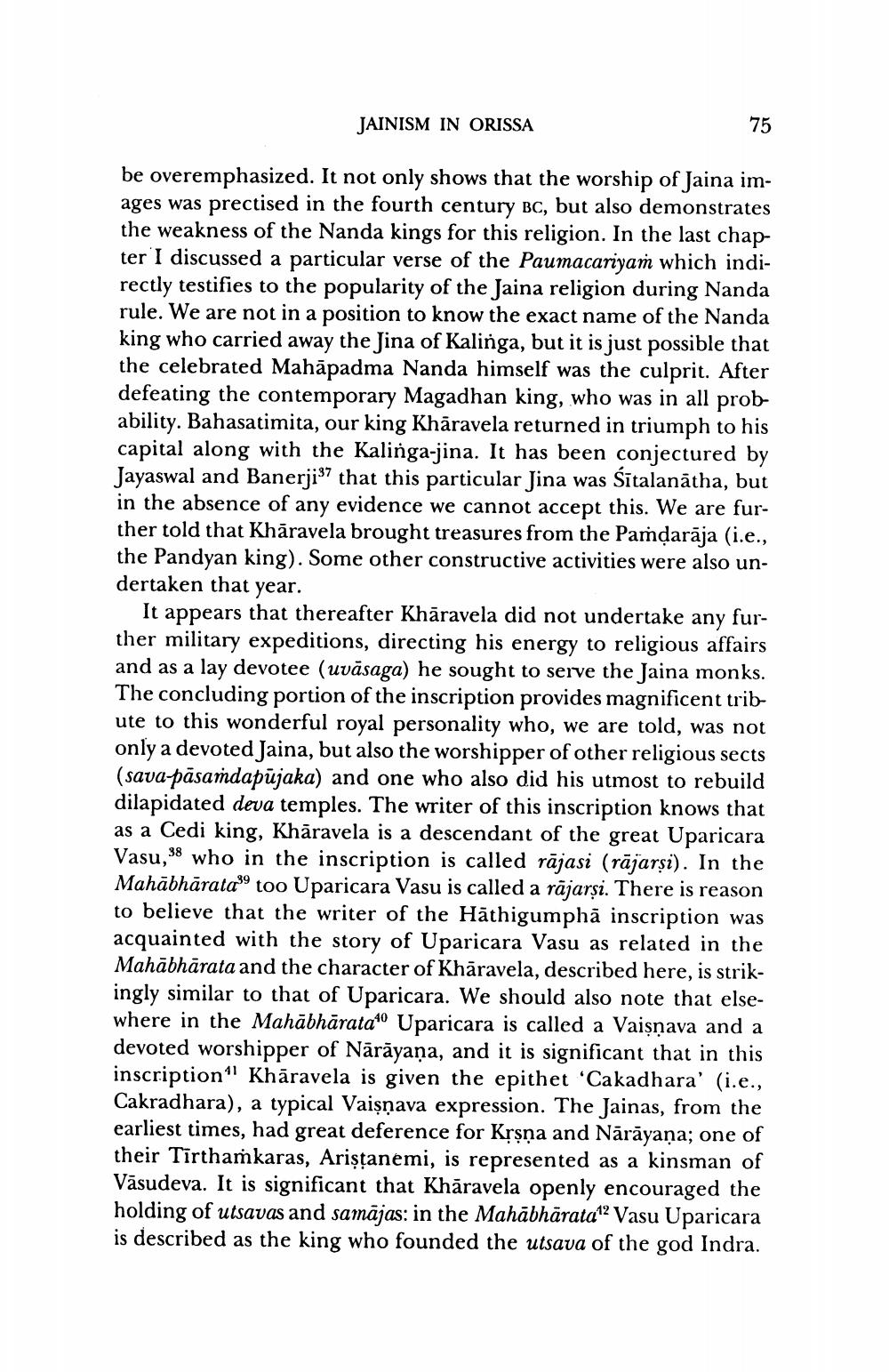________________
JAINISM IN ORISSA
75
be overemphasized. It not only shows that the worship of Jaina images was prectised in the fourth century BC, but also demonstrates the weakness of the Nanda kings for this religion. In the last chapter I discussed a particular verse of the Paumacariyam which indirectly testifies to the popularity of the Jaina religion during Nanda rule. We are not in a position to know the exact name of the Nanda king who carried away the Jina of Kalinga, but it is just possible that the celebrated Mahāpadma Nanda himself was the culprit. After defeating the contemporary Magadhan king, who was in all probability. Bahasatimita, our king Khāravela returned in triumph to his capital along with the Kalinga-jina. It has been conjectured by Jayaswal and Banerji”7 that this particular Jina was Šītalanātha, but in the absence of any evidence we cannot accept this. We are further told that Khāravela brought treasures from the Pamdarāja (i.e., the Pandyan king). Some other constructive activities were also undertaken that year.
It appears that thereafter Khāravela did not undertake any further military expeditions, directing his energy to religious affairs and as a lay devotee (uvāsaga) he sought to serve the Jaina monks. The concluding portion of the inscription provides magnificent tribute to this wonderful royal personality who, we are told, was not only a devoted Jaina, but also the worshipper of other religious sects (sava pāsaņdapūjaka) and one who also did his utmost to rebuild dilapidated deva temples. The writer of this inscription knows that as a Cedi king, Khāravela is a descendant of the great Uparicara Vasu,38 who in the inscription is called rājasi (rājarși). In the Mahābhāratatoo Uparicara Vasu is called a rājarși. There is reason to believe that the writer of the Häthigumphā inscription was acquainted with the story of Uparicara Vasu as related in the Mahābhārata and the character of Khāravela, described here, is strikingly similar to that of Uparicara. We should also note that elsewhere in the Mahābhārata“Uparicara is called a Vaisnava and a devoted worshipper of Nārāyaṇa, and it is significant that in this inscription" Khāravela is given the epithet 'Cakadhara' (i.e., Cakradhara), a typical Vaişņava expression. The Jainas, from the earliest times, had great deference for Krşņa and Nārāyaṇa; one of their Tirthařkaras, Aristanemi, is represented as a kinsman of Vasudeva. It is significant that Khāravela openly encouraged the holding of utsavas and samājas: in the Mahābhārata"? Vasu Uparicara is described as the king who founded the utsava of the god Indra.




